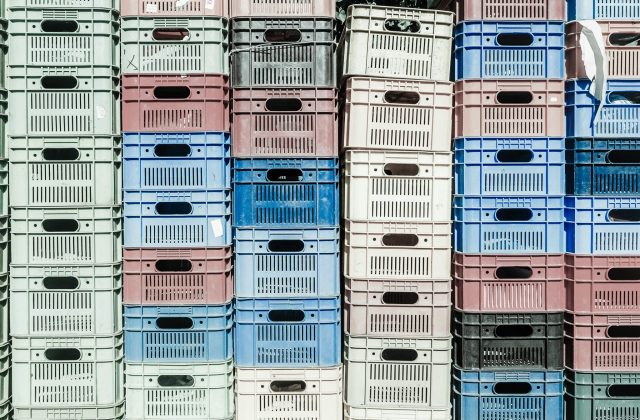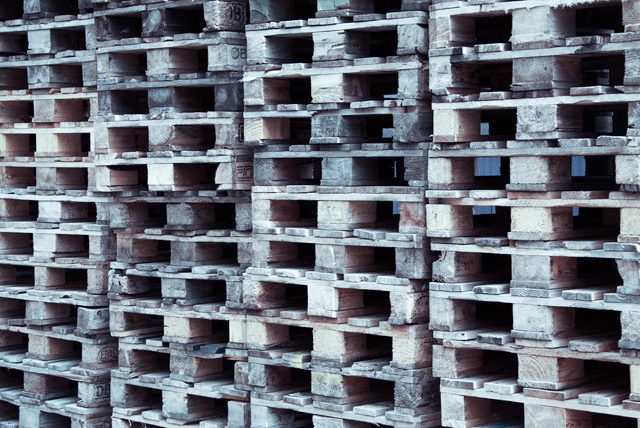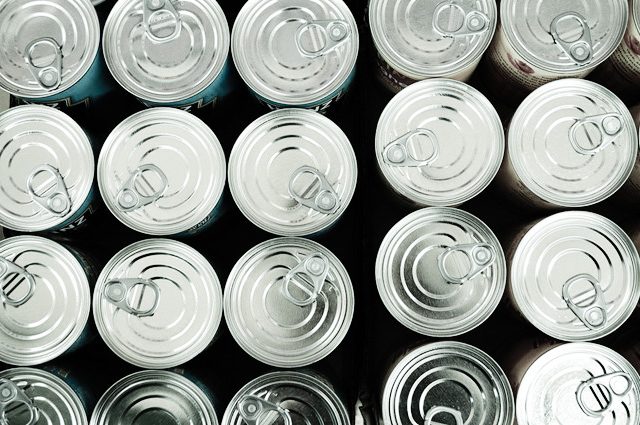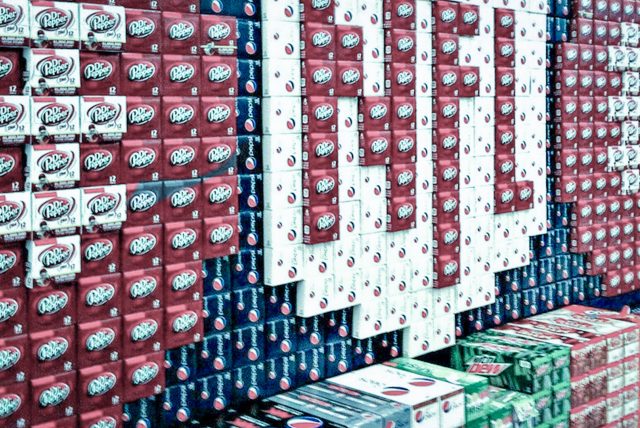What is packaging products?
Packaging means all products made of any materials of any nature to be used for the containment, protection, handling, delivery and presentation of goods from the producer to the user or the consumer. All disposable products used for the same purpose are also packaging.
Packaging and distribution of responsibilities
The categorisation of packaging is based on the material of which the packaging is made. Next, the shape, application and use will affect all or part of the set of rules. Generally, the conception, design and use of the product plays an important role in this set of rules.
Packaging materials
Packaging is made of the materials listed below, and you should use this categorisation in your registration and reporting of quantities.
See the EU Regulation 2019/665 about reporting of packaging
Certain countries have requirements to identification of packaging materials.
Packaging materials

Packaging
Plastics

Packaging
Wood

Packaging
Metal (Ferrous)

Packaging
Aluminium

Packaging
Glass

Packaging
Cardboard

Packaging
Paper

Packaging
Food and drink cartons
Packaging
Ceramics
Packaging
Cork
Packaging
Porcelain
Packaging
Textiles
Packaging
Other
Packaging types
Packaging is also categorised after its use. Packaging is divided into the groups primary, secondary, and tertiary. In addition, there is a special type of packaging called “service packaging”.
Packaging types

Packaging
Primary
Primary packaging - also called sales packaging - is closest to the product. First level of protection af the product and conceived so as to constitute a sales unit to the final user or consumer at the point of purchase. Primary packaging is an active part of the product’s appearance.

Packaging
Secondary
Secondary packaging - also known as multi-pack or retail packaging - Grouped packaging displaying a product together with identical or similar products in the shop or point of purchase. It can be removed from the product without affecting its characteristics.

Packaging
Tertiary
Tertiery packaging also known as transport packaging, i.e. packaging conceived so as to facilitate handling and transport of a number of sales units or grouped packagings in order to prevent damage due physical handling and transport.

Packaging
Service packaging
So called "Service packagings" are basically empty packagings filled at the point of sale.
Packaging definitions and concepts
In addition to the different categorisations of packaging materials, the design, conception, and use also determine what you have to do as a producer, user or importer of packaging in Denmark. Therefore, in the following we give an outline of concepts and definitions that are key in the packaging legislation; they may indicate whether your business is subject to a responsibility.
Important terms for packaging

In addition to the above, there are a number of other concepts and definitions that, combined, may decide which requirements your business may have to meet in connection with the producer responsibility for packaging.
For example, the packaging directive defines “service packaging” as follows:
- Service packaging – “Items designed and intended to be filled at the point of sale and ‘disposable’ items sold, filled or designed and intended to be filled at the point of sale shall be considered to be packaging provided they fulfil a packaging function.”
Further to the description of service packaging it may be needed to make a distinction between ”empty” and ”filled” packaging
Also called budgeted quantities. When your company registers for the first time you must state the quantities of packaging that you expect to make available on the Danish market in the current year. In DPA we use the expected quantities placed on the market to calculate how large a quantity of packaging waste each company is responsible to manage either in practice through our allocation system or financially through a handling fee.
Non-generic packaging
The producer has the packaging or the filled packaging designed or manufactured under their own name or brand, regardless of who has manufactured the packaging or the filled packaging and whether or not other brands are visible on the packaging or the filled packaging.
Generic packaging
The producer has not the packaging or the filled packaging designed or manufactured under their own name or brand, regardless of who has manufactured the packaging or the filled packaging and whether or not other brands are visible on the packaging or the filled packaging.
Also called retail packaging: Packaging making up a grouping of sales units at a point of sale whether or not it is sold as such to a consumer or is only used, for instance, to fill the shelves at a point of sale. It must be possible to remove the packaging from the product without affecting its characteristics.
Packaging where the material is contaminated due to the product it contained. Management of the packaging must therefore be carried out according to the guidelines for hazardous waste and dangerous substances. Waste may, for instance, be harmful to human health, harmful to the environment, highly inflammable, corrosive, or toxic.
Companies may be allocated with a handling fee if their market share of total quantities of packaging made available on the market in Denmark is not large enough to have a geographical allocation. The handling fee covers the costs of management of the quantity of packaging made available by that company.
Packaging that – when it reaches its end of life – is expected to be sorted into material categories in view of recycling and recovery.
Packaging that cannot be recycled due to the state of the material (e.g. packaging for foodstuffs and composites) but that is not hazardous. Packaging in residual waste will normally be incinerated in a waste-to-energy facility and thereby be recovered.
Packaging must be reported under these materials:
- Aluminium
- Glass
- Ferrous metal
- Food and beverage cartons
- Cardboard
- Paper
- Plastic (Including Expanded polystyren (EPS))
- Wood
- Ceramics
- Cork
- Porcelain
- Textiles
- Other
*Food and beverage cartons must always be registered and reported regardless of material
Other materials than the above is not subject to producer responsibility in Denmark.
The term producer is used for all types of companies that are subject to producer responsibility. The definition of a producer may vary depending on the product area. For packaging the company must meet a number of criteria defined in the Statutory Order on producer responsibility for packaging. The company (producer, importer, or distributor) must:
- Be established in Denmark and for the first time make transport packaging, reusable packaging, primary production packaging, or service packaging available on the Danish market
- Be established in Denmark and for the first time make filled packaging or packaging available on the Danish market, or
- Be established in another EU Member State or in a non-EU/EEC country and for the first time make transport packaging, reusable packaging, primary production packaging, service packaging, or filled packaging available directly to end-users (private or business) in Denmark through distance selling.
How to manage packaging after use and when it has become waste. The different packaging material categories must be broken down on three waste types in the producer register. See Ordinary packaging, Hazardous packaging, and Packaging in residual waste.
Reusable packaging is packaging designed for being refilled or reused for the same purpose for which it was conceived. Producers of reusable packaging have to register in the producer register no later than 1 February 2025.
It is not mandatory for producers of reusable packaging to be member of a collective scheme.
Packaging making up together with a product a commodity that is sold at a point of sale to consumers or companies. This is the packaging that is closest to the product.
Packaging conceived and intended to be filled at the point of sale to the end-user. Service packaging also covers beverage containers and cups for beverages of single-use plastic that are sold empty and that are not conceived or intended to be filled at the point of sale.
Packaging conceived so as to facilitate handling and transport of a number of sales units or grouped packagings in order to prevent physical handling and transport damage.
Shortcuts
About registration
Companies already covered can register from April 1, 2024. However, companies with reusable packaging can only register from December 31, 2024
Marking of packaging
See marking requirements and codes to be used for packaging products
Packaging - legislation
See the statutory basis for producer responsibility for packaging
Single-use plastic
See packaging that is also single-use plastic
Packaging products
See regulations and characteristics for different types of packaging
Check packaging
Take the test to see if your packaging is covered
Find your packaging category
If you are covered, find your category